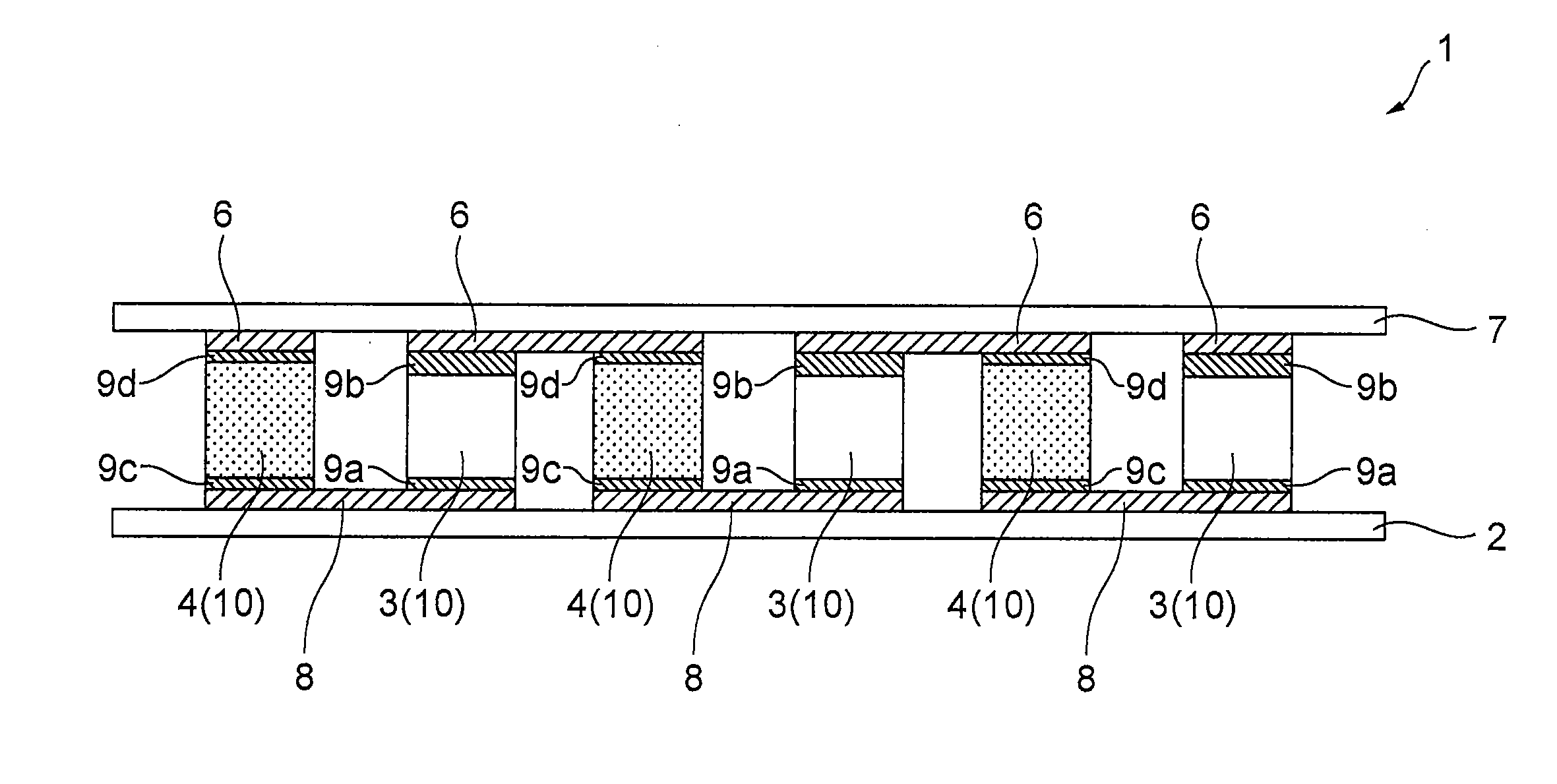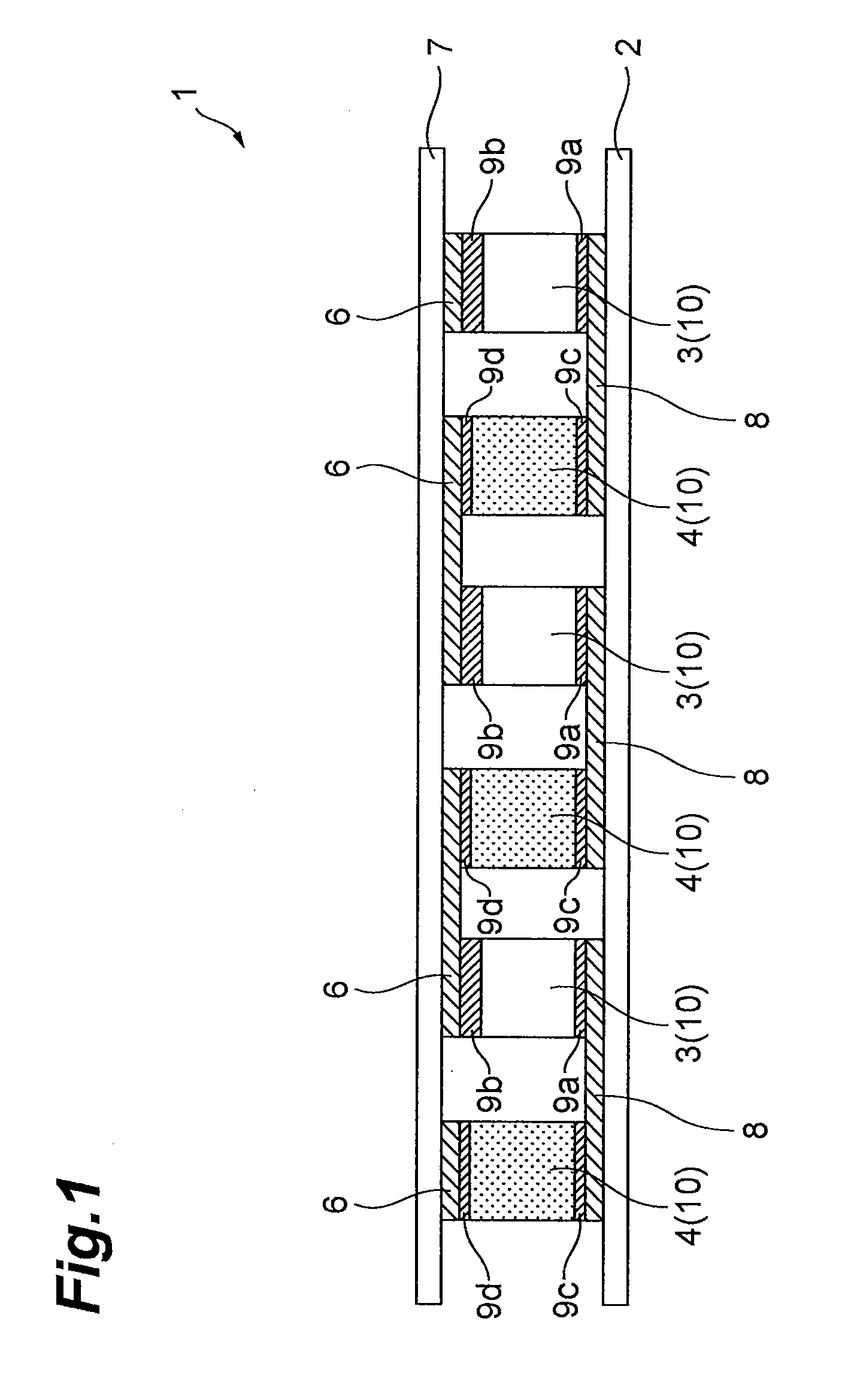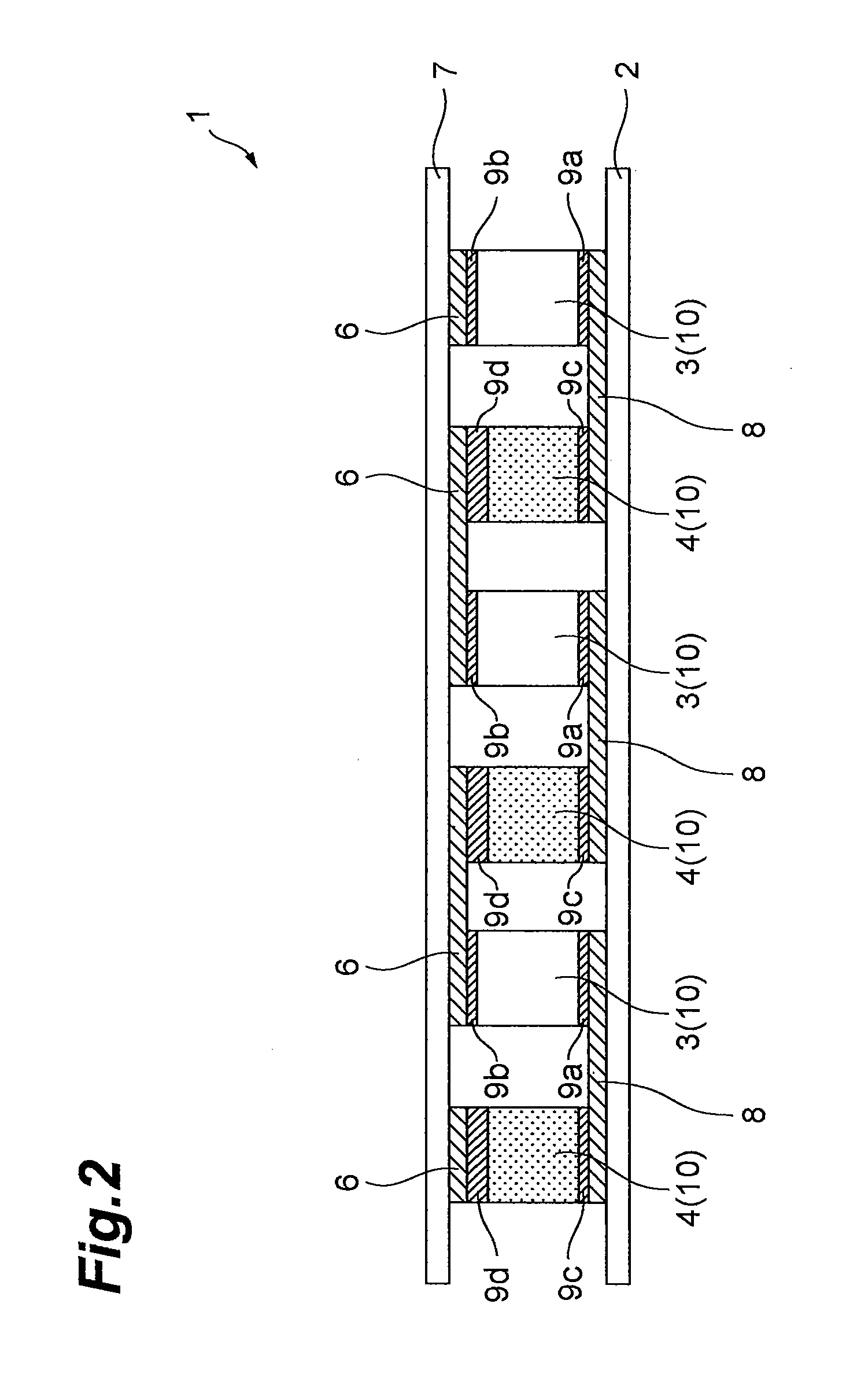Thermoelectric conversion module
a technology of conversion module and thermoelectric element, which is applied in the direction of thermoelectric device junction materials, electrical apparatus, thermoelectric device with peltier/seeback effect, etc., can solve the problems that conventional methods cannot sufficiently inhibit the fracture of the substrate or of the thermoelectric conversion element, and achieve the effect of small thermal expansion coefficient, small thermal expansion coefficient and large thermal expansion coefficien
- Summary
- Abstract
- Description
- Claims
- Application Information
AI Technical Summary
Benefits of technology
Problems solved by technology
Method used
Image
Examples
first embodiment
[0027]FIG. 1 illustrates a sectional view of a thermoelectric conversion module 1 in a first embodiment. As is illustrated in FIG. 1, the thermoelectric conversion module 1 comprises a first substrate 2, a first electrode 8, a thermoelectric conversion element 10, a second electrode 6 and a second substrate 7.
[0028]The first substrate 2 has, for instance, a rectangular shape, has electrically insulating properties and thermal conductance, and covers one ends of a plurality of the thermoelectric conversion elements 10. Examples of the materials for this first substrate include alumina, aluminum nitride and magnesia.
[0029]The first electrode 8 is provided on the first substrate 2, and electrically connects one end faces of mutually adjacent thermoelectric conversion elements 10 with each other. This first electrode 8 can be formed at a predetermined position on the first substrate 2, for instance, with a thin film method such as sputtering and vapor deposition, and with a method such ...
second embodiment
[0050]FIG. 2 illustrates a sectional view of a thermoelectric conversion module 1 in a second embodiment.
[0051]The first point at which the thermoelectric conversion module 1 according to the second embodiment is different from the thermoelectric conversion module 1 according to the first embodiment is a point that thermal expansion coefficient of the bonding members 9a to 9d is smaller than thermal expansion coefficients of the p-type thermoelectric conversion element 3 and the n-type thermoelectric conversion element 4. The second point is a point that the height of the n-type thermoelectric conversion element 4 having a larger thermal expansion coefficient of the p-type thermoelectric conversion element 3 and the n-type thermoelectric conversion element 4 is set so as to be lower than the height of the p-type thermoelectric conversion element 3 having a smaller thermal expansion coefficient.
[0052]Because the height of the n-type thermoelectric conversion element 4 having a larger...
third embodiment
[0054]FIG. 3 illustrates a sectional view of a thermoelectric conversion module 1 in a third embodiment.
[0055]The points at which the thermoelectric conversion module 1 according to the third embodiment is different from the thermoelectric conversion module 1 according to the first embodiment is a point that the total thickness of the pair of the bonding members 9a, 9b in the side of the p-type thermoelectric conversion element 3 having a smaller thermal expansion coefficient is equal to the total thickness of the pair of the bonding members 9c, 9d in the side of the n-type thermoelectric conversion element 4 having a larger thermal expansion coefficient, and a point that the total thickness of parts 6a, 8a of a pair of electrodes 6, 8 connected to the n-type thermoelectric conversion element 4 having a larger thermal expansion coefficient, the parts 6a, 8a facing the thermoelectric conversion element 4 to which the electrodes 6, 8 are connected, is smaller than the total thickness ...
PUM
 Login to View More
Login to View More Abstract
Description
Claims
Application Information
 Login to View More
Login to View More - R&D
- Intellectual Property
- Life Sciences
- Materials
- Tech Scout
- Unparalleled Data Quality
- Higher Quality Content
- 60% Fewer Hallucinations
Browse by: Latest US Patents, China's latest patents, Technical Efficacy Thesaurus, Application Domain, Technology Topic, Popular Technical Reports.
© 2025 PatSnap. All rights reserved.Legal|Privacy policy|Modern Slavery Act Transparency Statement|Sitemap|About US| Contact US: help@patsnap.com



